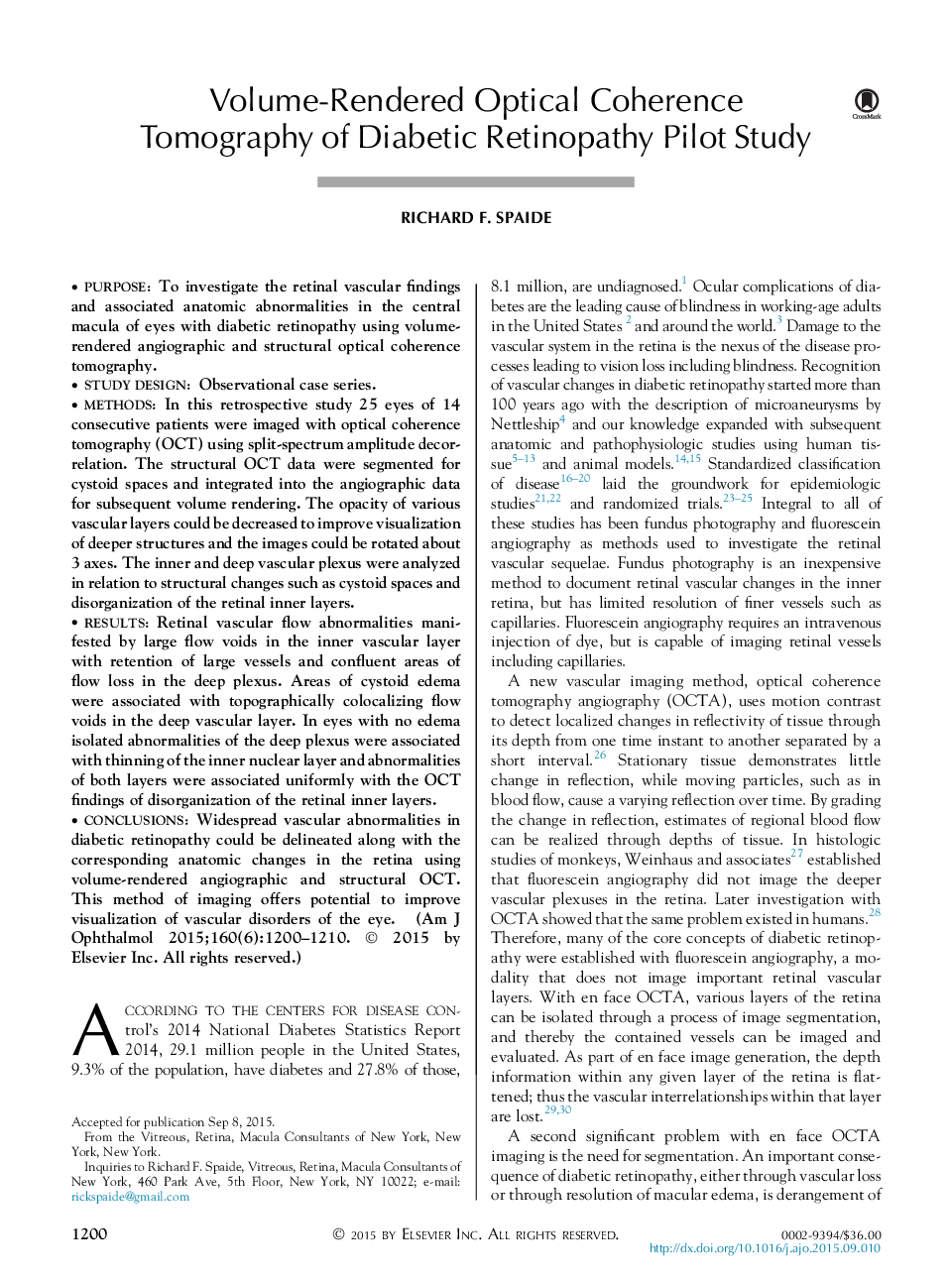| Article ID | Journal | Published Year | Pages | File Type |
|---|---|---|---|---|
| 6194882 | American Journal of Ophthalmology | 2015 | 11 Pages |
PurposeTo investigate the retinal vascular findings and associated anatomic abnormalities in the central macula of eyes with diabetic retinopathy using volume-rendered angiographic and structural optical coherence tomography.Study DesignObservational case series.MethodsIn this retrospective study 25 eyes of 14 consecutive patients were imaged with optical coherence tomography (OCT) using split-spectrum amplitude decorrelation. The structural OCT data were segmented for cystoid spaces and integrated into the angiographic data for subsequent volume rendering. The opacity of various vascular layers could be decreased to improve visualization of deeper structures and the images could be rotated about 3 axes. The inner and deep vascular plexus were analyzed in relation to structural changes such as cystoid spaces and disorganization of the retinal inner layers.ResultsRetinal vascular flow abnormalities manifested by large flow voids in the inner vascular layer with retention of large vessels and confluent areas of flow loss in the deep plexus. Areas of cystoid edema were associated with topographically colocalizing flow voids in the deep vascular layer. In eyes with no edema isolated abnormalities of the deep plexus were associated with thinning of the inner nuclear layer and abnormalities of both layers were associated uniformly with the OCT findings of disorganization of the retinal inner layers.ConclusionsWidespread vascular abnormalities in diabetic retinopathy could be delineated along with the corresponding anatomic changes in the retina using volume-rendered angiographic and structural OCT. This method of imaging offers potential to improve visualization of vascular disorders of the eye.
